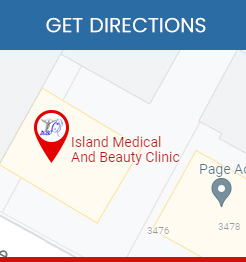Fungal Nail Treatment in Honolulu, HI
Fungal nail infections are also called onychomycosis. Nails grow thick, weak, fractured, and discolored as a result of the fungus. It is brought on by the various fungus species that exist in our environment. If someone has a crack near the nail’s tissue, germs can go inside the nail and infect the person. Dr. Lee, a family medicine specialist, and a board-certified physician, offers treatment for fungus nail infections that make it possible to live pain-free. Fungal nail infections primarily affect the toenail but they occasionally affect fingernails. If you have diabetes, nail damage, psoriasis, and a weakened immune system, you are more likely to get a fungal nail infection. To learn more about the treatment, contact us or request an appointment online. We are located at 3470 Waialae Ave Ste 6, Honolulu, HI 96816.


Table of Contents:
What is the main cause of toenail fungus?
What are the signs and symptoms of fungal nail infection?
What is the fastest way to cure toenail fungus?
How do you treat fungal nails?
Nail fungus is a common type of infection that affects your toenails and, more rarely, your fingernails.
Toenail fungus occurs when fungi get rooted between your toenail and your nail bed (the tissue directly below the toenail). While it can happen without an injury or laceration being present, it often occurs when there is a crack or cut in your toe that allows the fungus to grow.
If you have nail fungus, our medical team at Island Medical & Beauty Clinic would be happy assess and treat it. We offer safe and comprehensive treatment for fungal issues, ensuring that you can get back to looking and feeling great. For more information, you can connect with us; or, if you’re ready to see a specialist, book in online at your earliest convenience.
The main cause of toenail fungus is a type of mold known as dermatophytes. Dermatophytes are fungal microorganisms that feed off keratin, the protein found in your fingernails and toenails that makes them hard. These dermatophytes are responsible for 90% of toenail fungal infections, with other less common types of fungi making up the last 10%.
It’s important to note that toenail fungus is quite contagious, often spreading through direct contact with someone or by touching an infected surface. This is something to be mindful of if you have a fungal infection or think that you may have one.
While fungal nail infections are typically painless, they often change the appearance of your nail in ways that aren’t pleasing to the eye. Signs that you may have a fungal infection include a nail (or nails) that:
– Appear white, yellow, or brown.
– Appear cloudy in some spots.
– Are thicker than normal.
– Look misshapen.
– Have separated from your nail bed.
– Consistently crack or break one or multiple spots.
If you think that you may have a fungal nail infection, book in with your primary care provider. They will examine the affected toenail, evaluate your symptoms, confirm whether or not its an infection, and identify which type of treatment is best.
Unfortunately, there is no quick-fix solution to toenail fungus as it’s a condition that is notoriously tricky to treat. Treatment often lasts for several months and will vary depending on the severity of your infection.
In addition, there is no one-size-fits-all treatment as it will largely depend on the severity of your symptoms, your unique medical health, and how complex your case is. This is why it’s important to treat you condition through a healthcare provider, as they’ll be able to tailor make you a treatment plan that best fits what you need.
Oral antifungal medications and topical antifungal medications are often prescribed, as they touted as being some of the most effective forms of treatment when it comes to fungal nail infections. However, it’s important to note that it doesn’t always work and may require a second round of treatment or a new treatment plan all together.
Your doctor will assess your affected nails thoroughly before providing you with a detailed treatment plan. There are three primary ways to go about treating fungal nail infections, which may be used independently or in combination with each other depending on your unique needs. They are:
Oral antifungal medication: This includes terbinafine, itraconazole, or fluconazole, all of which must be taken every day for a series of months. These types of medications can impact your liver and are prone to interacting with other medications, so your healthcare provider will assess your unique medical situation to determine if they’re right for you.
Topical medication: This comes in the form of a lotion that must be regularly applied to the affected area over a prescribed amount of time. Topical medications are often paired with oral fungal medications to improve their effectiveness.
Laser treatments: This type of treatment can decrease and/or eliminate the fungus under the nail by using special laser technology. However, the cure rate for laser treatment is typically much lower than oral and topical alternatives, meaning that it’s not usually the first line of defence when it comes to treating a fungal infection.
If you have a fungal nail infection and don’t know where to turn, connect with us at Island Medical & Beauty Clinic. Our team of medical professionals provides thorough, safe, and professional treatment that you can rely on. For more information, reach out to us; otherwise, you can book in for an appointment online at your earliest convenience. We are conveniently located at 3470 Waialae Ave Ste 6, Honolulu, HI 96816. We serve patients from Honolulu HI, Halawa HI, Aiea HI, Village Park HI, Pearl City HI, and surrounding areas.





